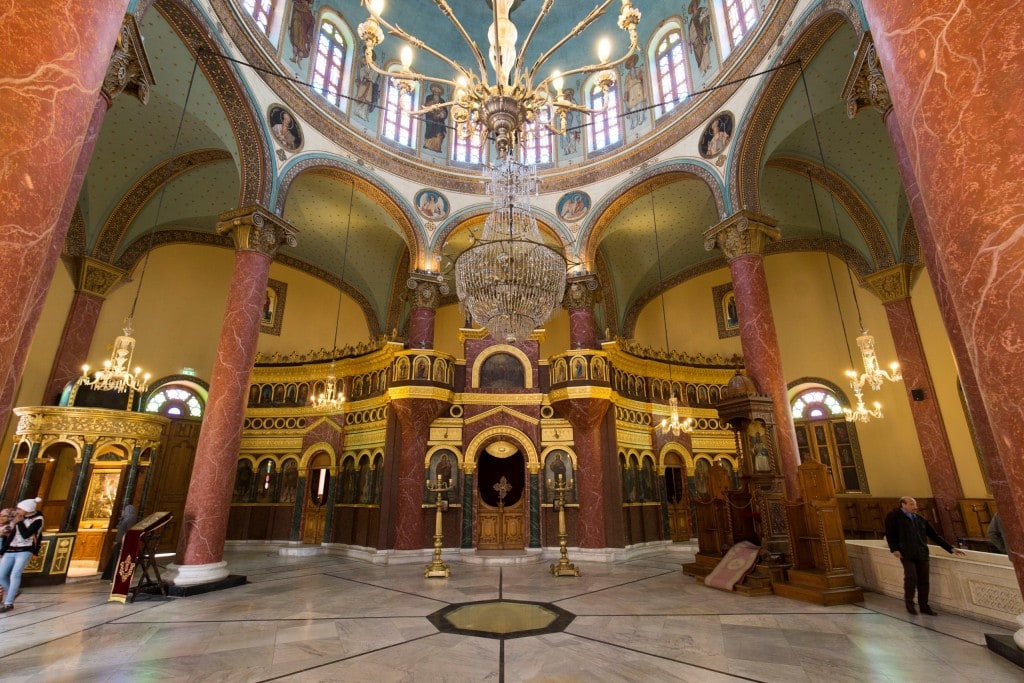

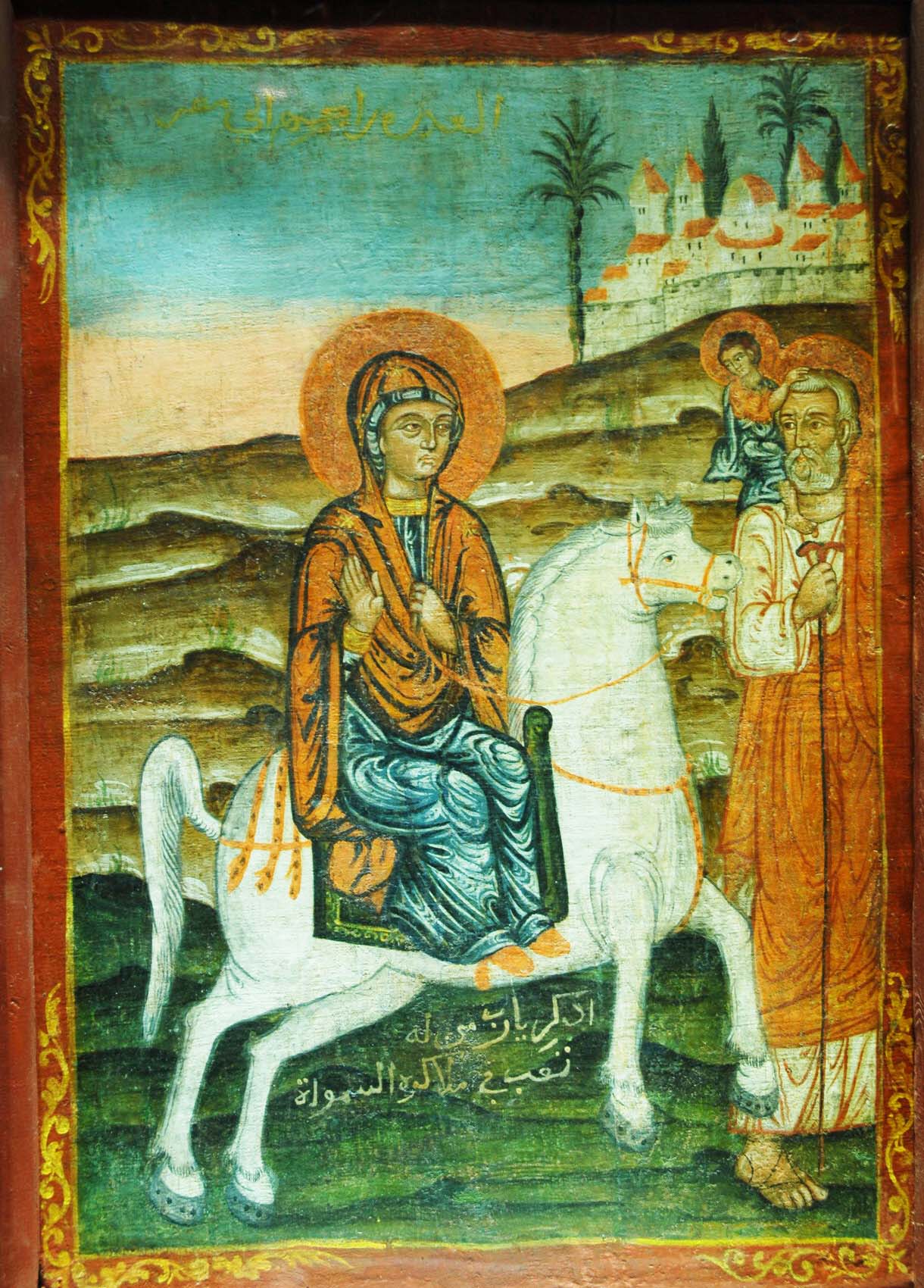
This icon depicts the flight of the Holy Family into Egypt. The Virgin Mary is riding a white horse, while Jesus can be seen sitting on St. Joseph’s right shoulder. Date: 18th century AD Medeuim:Wood
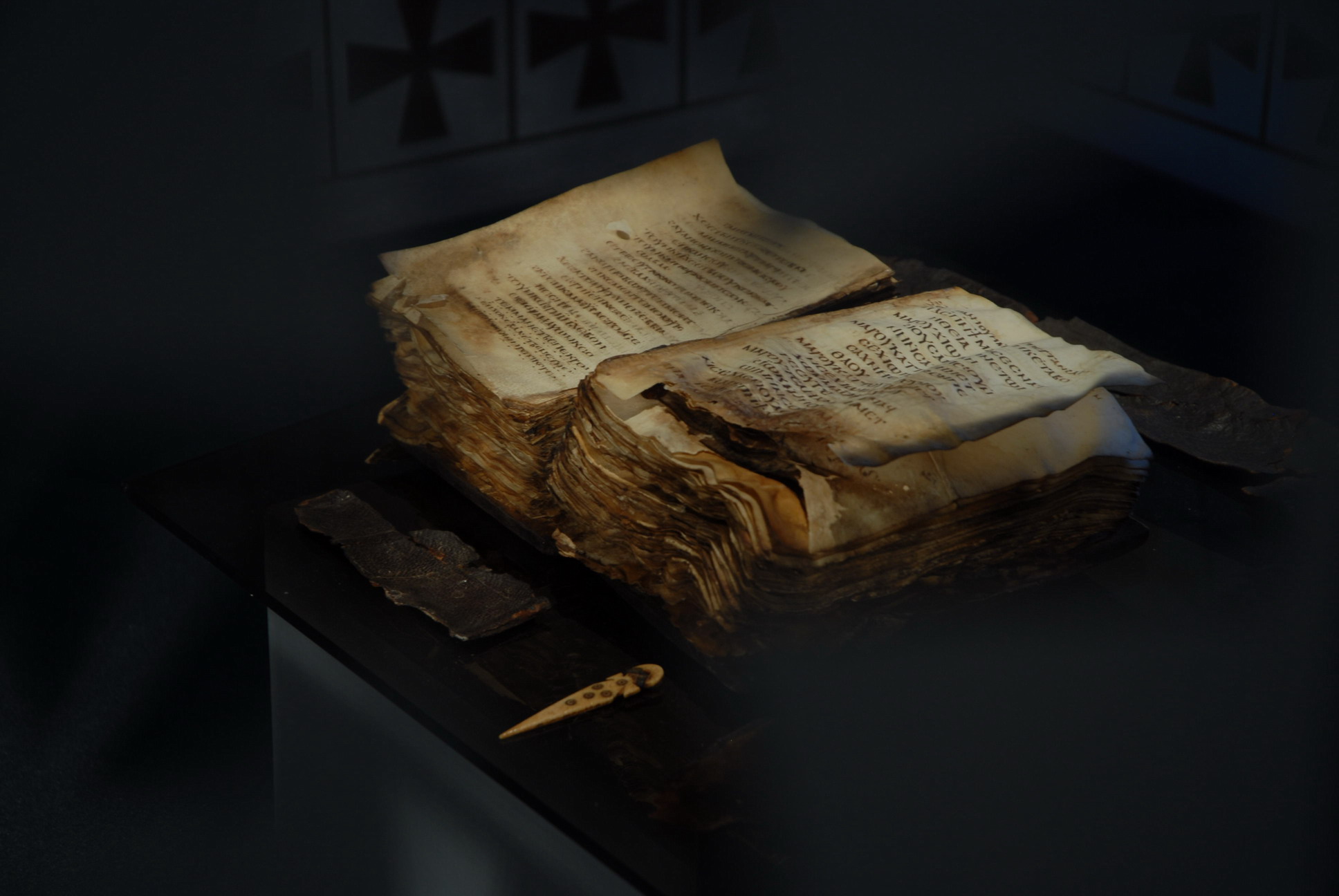
The first complete version of the Psalter had been found in a cemetery dates back to early Christianity. It was placed under a child mummy. Beni Suef 4th - 5th century A.D
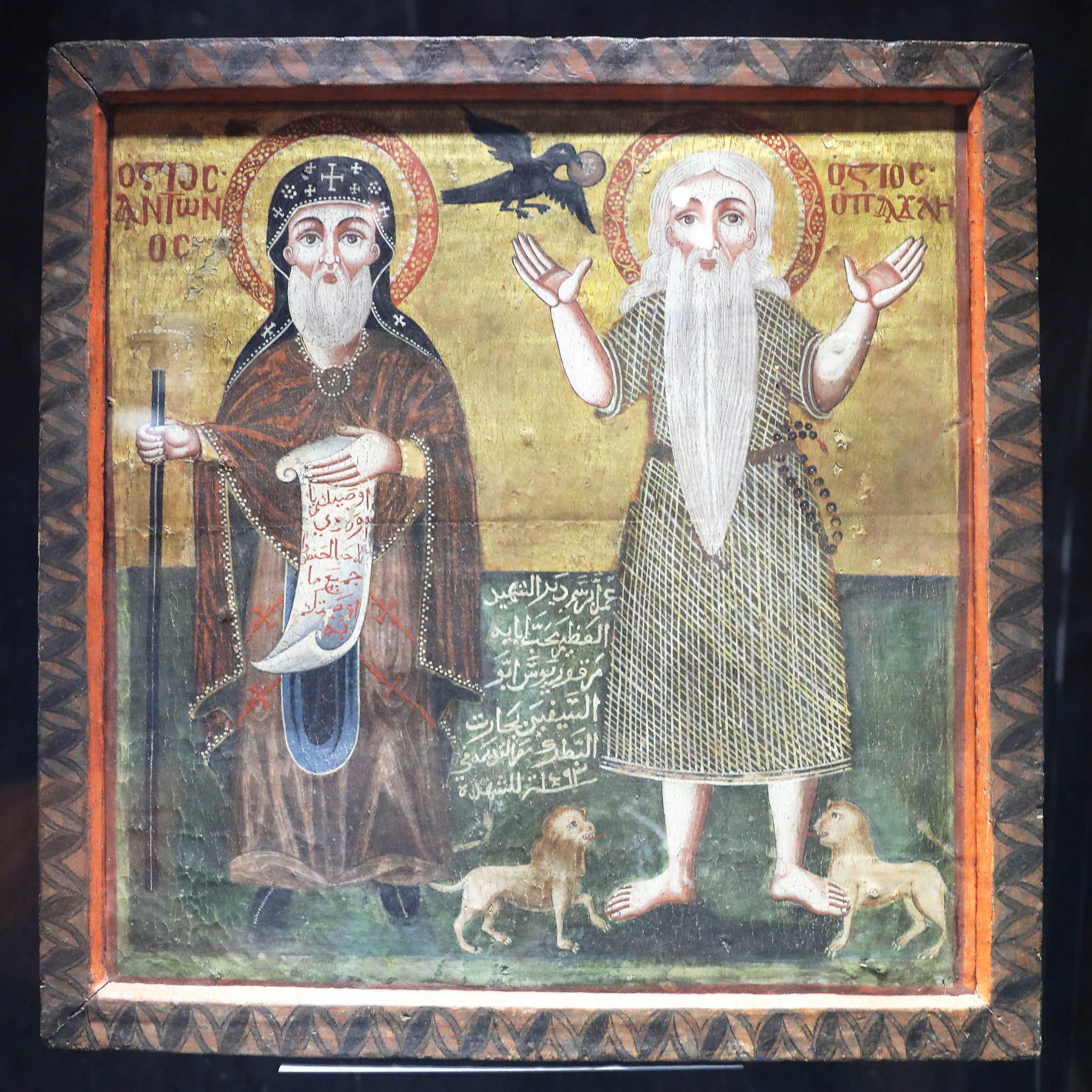
This famous icon represents the visit of Saint Antony (on the left) to Saint Paul, who lived in the eastern desert near the Red Sea.
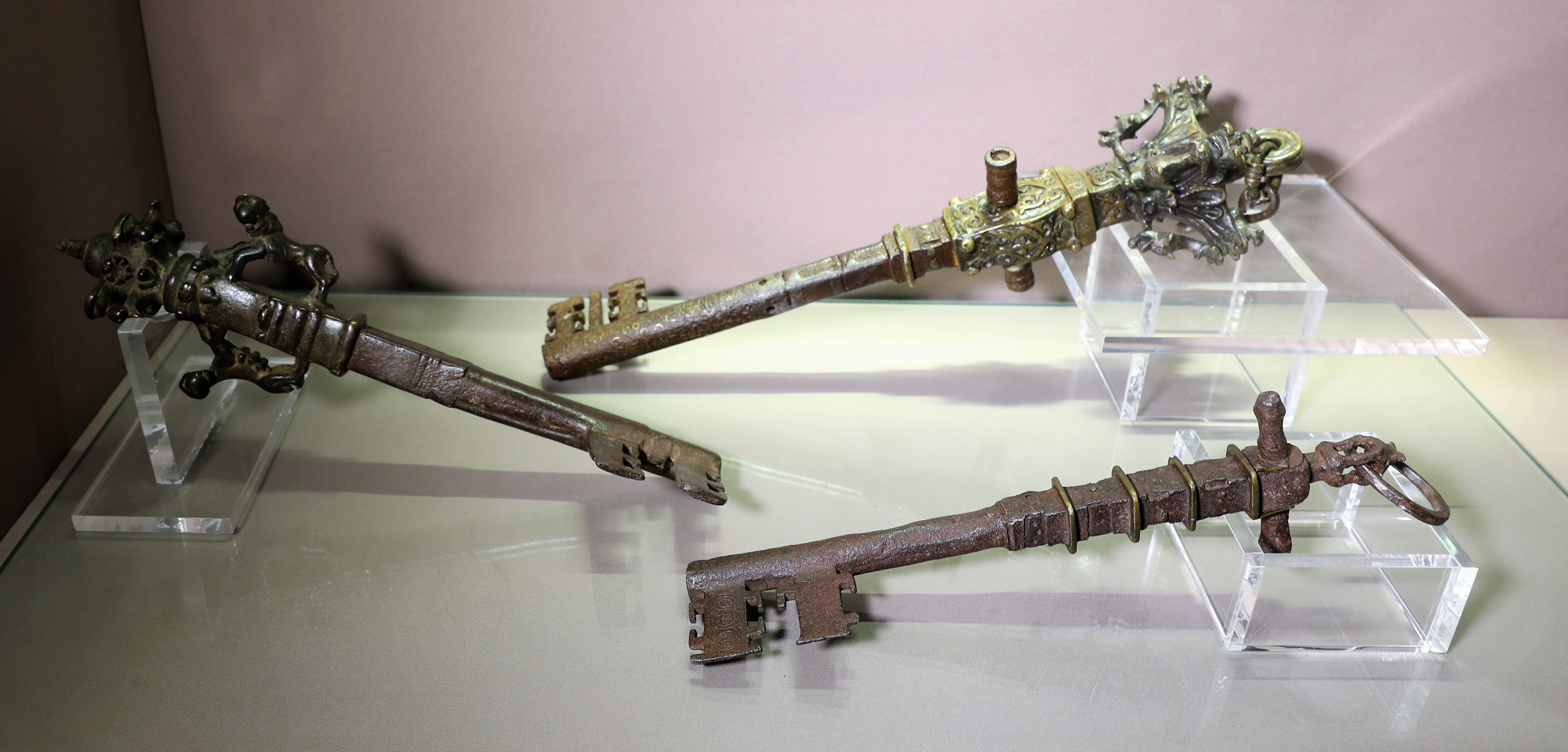
Three monumental keys of monastries from sohag. Two of them are decorated like a Corinthian column capital and the third is decorated with a cross. Medium: Iron, Bronze and Copper. Provenance: Sohag. 12th - 13th Centuries A.D.

Decorated Niche of Virgin Mary suckling the infant Jesus. Excavations at the Monastery of St. Jeremiah in Saqqara have yielded several niches that were pierced into the eastern walls of monks’ cells. Monks used these niches as spaces in which to pray. These niches bear Christian scenes showing the enthroned Jesus. Two niches are decorated with the Virgin Mary nursing the infant Jesus. She is depicted flanked by angels and saints. Date: 6th or 7th century A.D Mideum:Tempera Monastery of St. Jeremiah - Saqqara
| Nationality | price | |
|---|---|---|
| Egyptians | adult | 20EGP |
| student | 10EGP | |
| Foriegn | adult | 230EGP |
| student | 120EGP | |
| NOTE: audio tour | 20EGP | |
Opening Hours |
|
|---|---|
| Saturday | from 9am to 11pm |
| Sunday | |
| Monday | |
| Tuesday | |
| Wednesday | |
| Thursday | |
| Friday | from 10am to 12am |
Egyptians and Arabs seniors aged over 60
Egyptians and Arabs with special needs